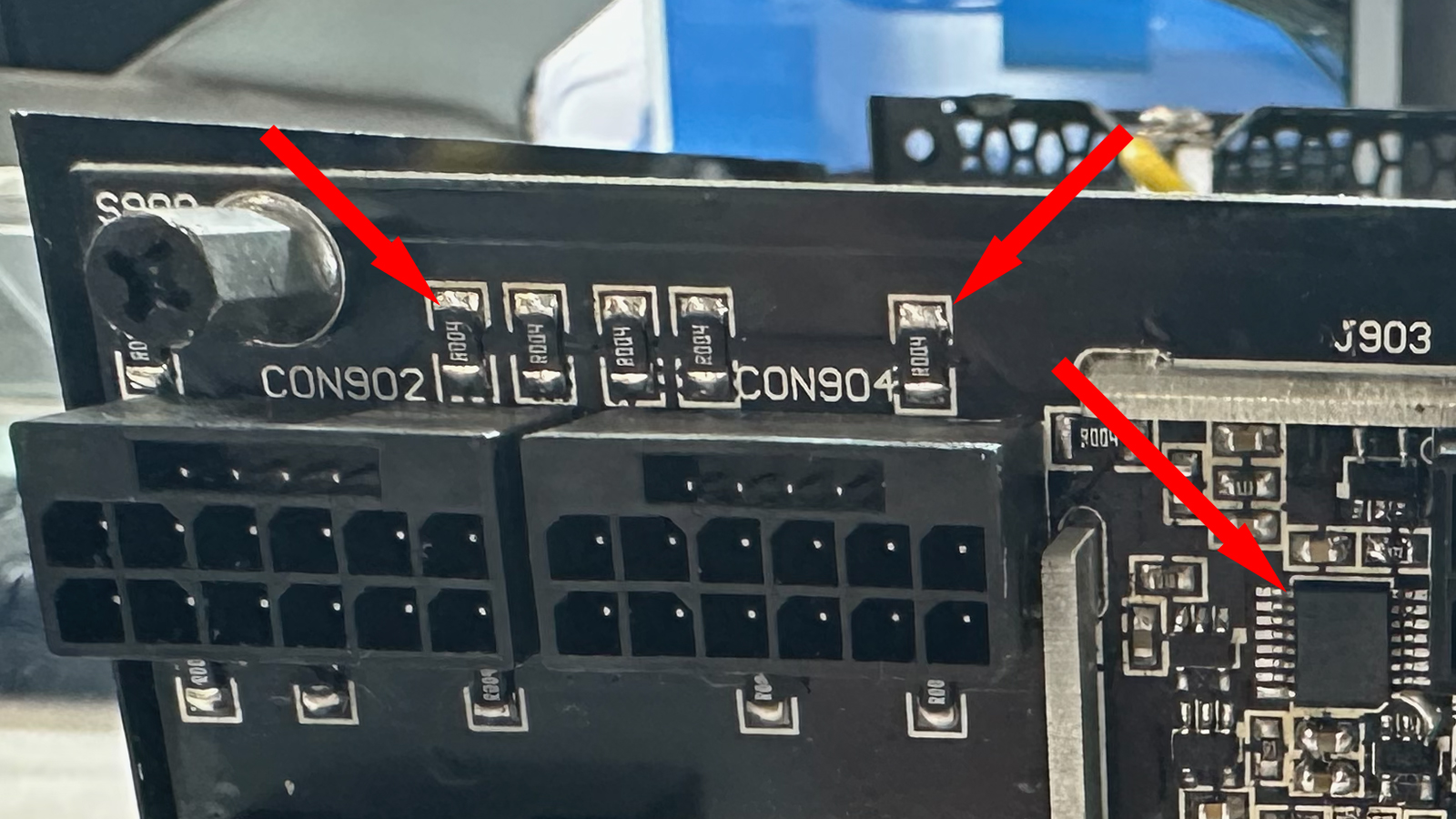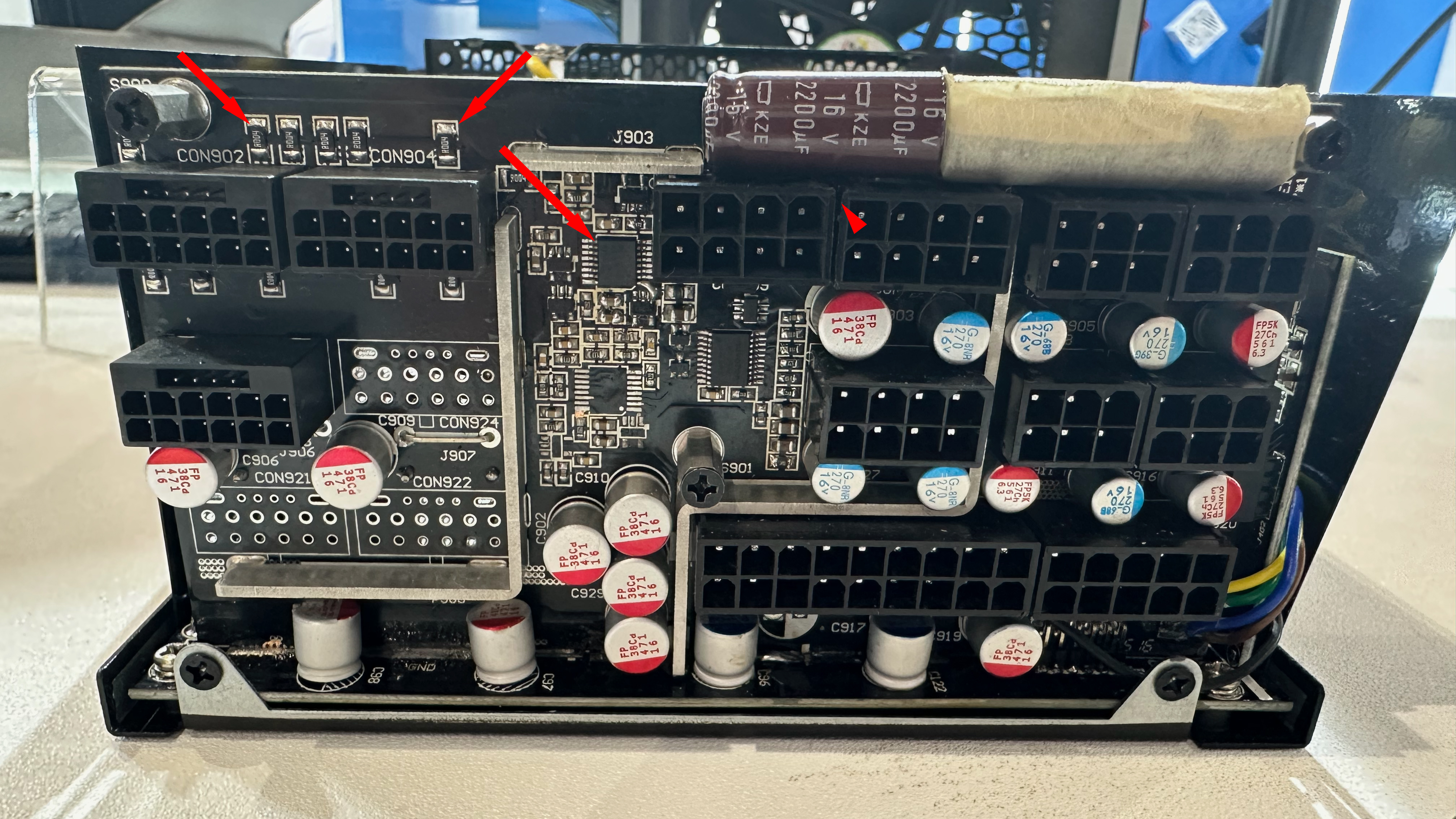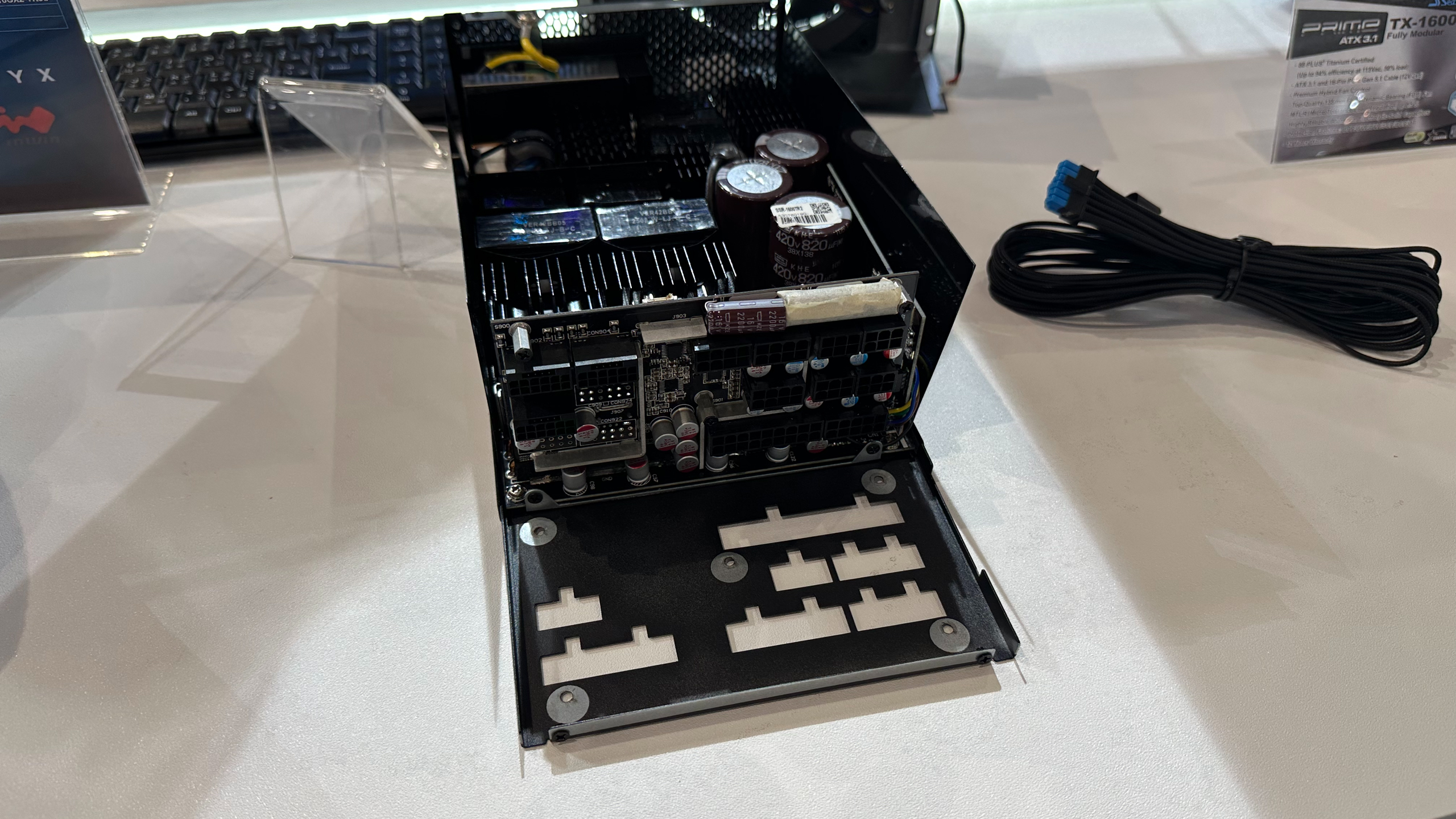Seasonic’s next-generation Prime PSUs to will try to stop connectors from melting

Seasonic plans to add a feature to its next-generation Prime power supplies that promises to solve the problem of overheating and melting 12VHPWR and 12V-2×6 power connectors once and for all. While the company promises to solve the problem, it does not resolve its source. At Computex, the company demonstrated a prototype.
A set of sensors, a microcontroller, and firmware that Seasonic plans to incorporate into its upcoming Prime power supplies will all work together, according to the company.
Although the production quality of cables, connectors, and the way people plug in their graphics cards have consequences, one of the key sources of the problem lies in the fact that graphics cards can create unbalanced loads on power rails in different circumstances, which can cause voltage increases and/or current increases on the power supply side. This causes wires in the power cable to overheat, eventually melting them and damaging graphics cards.
Seasonic proposes what is essentially two-factor protection against such a catastrophe. First up, contemporary premium power supplies can monitor their voltage output and current, and can alert PC owners of a malfunction. Seasonic proposes to use a special external device to tell users about problems, as well as enable end-users to monitor their 12V-2×6 connectors while using their graphics cards.

However, this measure doesn't work if you're not at your computer. To that end, Seasonic has added special circuitry with sensors that measure temperature and current on 12V-2×6 power connectors near the PSU. If temperature or current exceeds designated thresholds, next-generation Seasonic Prime PSUs will not only notify the owner using an external device (if plugged in), but will also trigger over-temperature and over-current protection that the power supply already has and therefore shut the system down.
While this could possibly ruin a day of offline rendering, it could also possibly save a very expensive graphics card. On the other hand, if an abnormal shutdown also ruins an SSD or HDD with precious data, this will certainly cause more damage than help.
But this is a technology for next-generation PSUs, so we will see how Seasonic’s plans work out. Seasonic plans to finish development of its next-generation Prime-series PSUs by the end of the year and then start to sell them in the first quarter of 2026.
Pricing hasn't been announced, though some additional chips and firmware work may boost pricing of already premium Prime power supplies to a new level.
Get Tom's Hardware's best news and in-depth reviews, straight to your inbox.
Follow Tom's Hardware on Google News to get our up-to-date news, analysis, and reviews in your feeds. Make sure to click the Follow button.

Anton Shilov is a contributing writer at Tom’s Hardware. Over the past couple of decades, he has covered everything from CPUs and GPUs to supercomputers and from modern process technologies and latest fab tools to high-tech industry trends.
-
TheyStoppedit Well this is nice, my data on my SSD/HDD will take the fall for the well being of my GPU. At least my GPU won't melt. Lol. This is so stupid. A GPU can be replaced. Data can not. It's not PSU manufacturers job to try and clean up a problem that NVidia created especially if we're gonna create one problem to solve another. What good is that? PSU manufacturers should be going to NVidia and telling them to be a man, own their mistakes and fix the problem at the root, not try and do a whole pile of electronic gymnastics to dodge the symptoms of a greater problem. This is getting more and more ridiculous by the second. A class action is needed here. This won't fix the problem. It might mask the symptoms at best. Someone needs to get through to NVidia and I think only a judge can at this point lolReply -
chaz_music Hmm. The correct solution is to put interleaved Buck converters on the GPU side for each pin. Make each pin current share directly through control. Simple fix and with modest cost delta.Reply
Of course, it really would have been easy if they had just chosen a larger 2 pin connector to bring power in, like the Anderson Powerpole 45A series. Soldering those monsters on a PCB is a chore though. -
S58_is_the_goat Their solution still doesn't really fix the problem, an amp limit per pin is the solution, but it seems Nvidia is the one who should be implementing this. But seems Jensen doesn't want to spend a dime and needs another ivory back scratcher.Reply -
hotaru251 PSU makers shouldnt be the ones needing to try and fix issue of the GPU's connection.Reply
GPU's in past had extra safety...don't reward them for taking em away and making others have to do it instead :| -
m3city I have an idea. NVidia, please Stop that 500W graphic bs, focus on reducing power draw. AMD keeps tdp of cpu's at generally same lev for over 10 years nów, while performance mulitiplied. Intel similarly, but their cpus skyrocketed its tdp i latest revisions. World does not need RT games at 4k, interpolated fps. 30 years ago game developers made games that worked. Nów we have this constant push for 'more power'. And melting connectors. And 1500W psu.Reply -
John Kiser Reply
I get annoyed hy this sentiment that it is Nvidia at fault. You do know that Nvidia alone didnt design the connector and outside of the founders edition cards straight from Nvidia the AIB parnters sre responsible for the power connectors that they do.TheyStoppedit said:Well this is nice, my data on my SSD/HDD will take the fall for the well being of my GPU. At least my GPU won't melt. Lol. This is so stupid. A GPU can be replaced. Data can not. It's not PSU manufacturers job to try and clean up a problem that NVidia created especially if we're gonna create one problem to solve another. What good is that? PSU manufacturers should be going to NVidia and telling them to be a man, own their mistakes and fix the problem at the root, not try and do a whole pile of electronic gymnastics to dodge the symptoms of a greater problem. This is getting more and more ridiculous by the second. A class action is needed here. This won't fix the problem. It might mask the symptoms at best. Someone needs to get through to NVidia and I think only a judge can at this point lol
Nvidia qasnine of the designers and ifnthe connector wasn't ready the overlying body who designed it should have been adamant that no-one use it for production products at all. -
Heiro78 Reply
The 12VHPWR spec was adopted by PCI-SIG. Many companies are a part of it. Including Nvidia, Intel, AMD, Apple, even video card AIB partners like Asus, MSI, and Gigabyte. We don't know which companies worked on or voted in favor of 12VHPWR. Nvidia was the one to implement it into their video cards AND mandate it for the high end products. AMD capatalized on it in their marketing with their not using it. If you watch the video linked below from Actual Hardcore Overclocking, you'll see another reason why people blame Nvidia for the hardware failures versus AIB partners. They intentionally did not have the per wire protections that could hamper the issues. Companies like EVGA left the business due to disagreements with Nvidia. We can only speculate as to who truly is at fault with the 12VHPWR connector.John Kiser said:I get annoyed hy this sentiment that it is Nvidia at fault. You do know that Nvidia alone didnt design the connector and outside of the founders edition cards straight from Nvidia the AIB parnters sre responsible for the power connectors that they do.
Nvidia qasnine of the designers and ifnthe connector wasn't ready the overlying body who designed it should have been adamant that no-one use it for production products at all.
People have commented to me that Intel was the head developer of the spec, but again who knows. My personal head canon is that Nvidia didn't want to continue with the 8-pin connectors because it would require 4 plus on a card per it's spec (safety factor) to achieve 500+ watts of power.
kb5YzMoVQywView: https://www.youtube.com/watch?v=kb5YzMoVQyw -
Heiro78 Reply
You're kidding right? How much was it?aberkae said:I bought a thermal camera to mitigate risk. Not taking a chance with these promises. -
aberkae Reply
$299 for macro usb one . It's in transit. I can return it for a full refund after I use it too. Going to do some stress testing, oc, Undervolting and acoustic tweaking. Currently I have it at 450 watts power limit (pny oc 5090) at 3ghz and barely notice any significant performance loss with acceptable noise levels but want to see if it can be improved.Heiro78 said:You're kidding right? How much was it?
